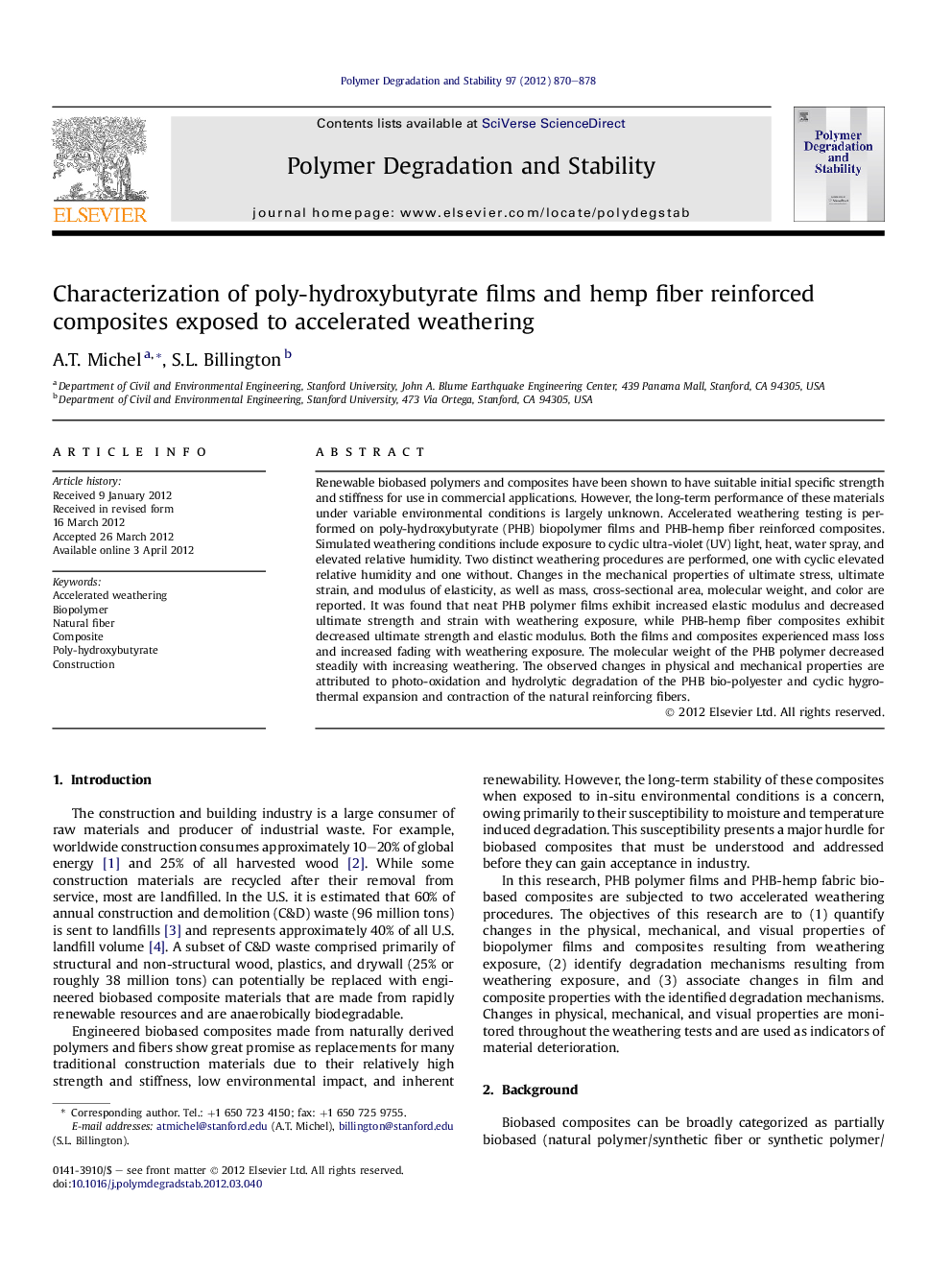| Article ID | Journal | Published Year | Pages | File Type |
|---|---|---|---|---|
| 5202794 | Polymer Degradation and Stability | 2012 | 9 Pages |
Renewable biobased polymers and composites have been shown to have suitable initial specific strength and stiffness for use in commercial applications. However, the long-term performance of these materials under variable environmental conditions is largely unknown. Accelerated weathering testing is performed on poly-hydroxybutyrate (PHB) biopolymer films and PHB-hemp fiber reinforced composites. Simulated weathering conditions include exposure to cyclic ultra-violet (UV) light, heat, water spray, and elevated relative humidity. Two distinct weathering procedures are performed, one with cyclic elevated relative humidity and one without. Changes in the mechanical properties of ultimate stress, ultimate strain, and modulus of elasticity, as well as mass, cross-sectional area, molecular weight, and color are reported. It was found that neat PHB polymer films exhibit increased elastic modulus and decreased ultimate strength and strain with weathering exposure, while PHB-hemp fiber composites exhibit decreased ultimate strength and elastic modulus. Both the films and composites experienced mass loss and increased fading with weathering exposure. The molecular weight of the PHB polymer decreased steadily with increasing weathering. The observed changes in physical and mechanical properties are attributed to photo-oxidation and hydrolytic degradation of the PHB bio-polyester and cyclic hygrothermal expansion and contraction of the natural reinforcing fibers.
